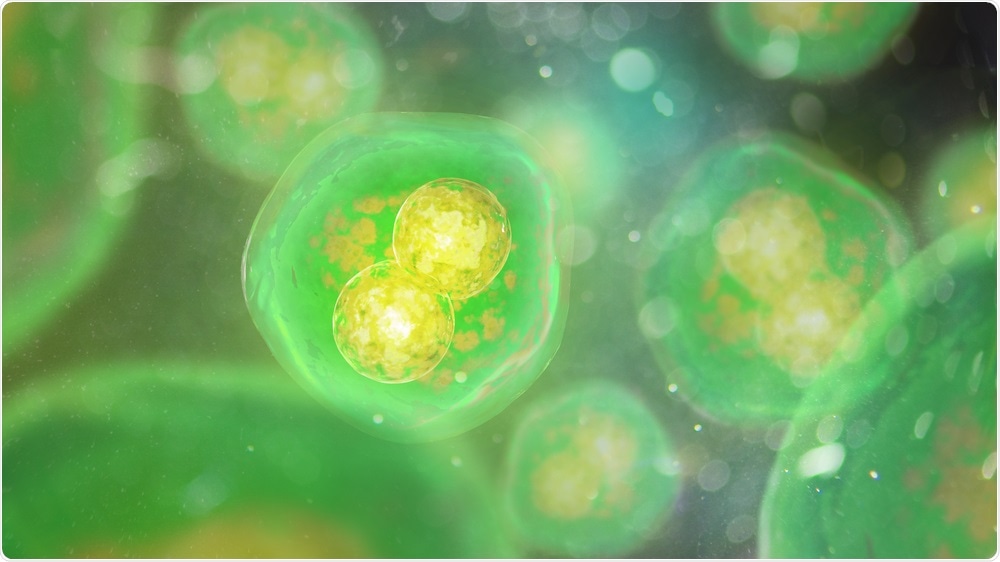Increasing brain stiffness as we age leads to stem cell dysfunction, new research published in Nature has reported. The study shows how older stem cells can be reverted to a younger and healthier state, a novel discovery that has important implications for a number of degenerative diseases and our fundamental understanding of the aging process.
 Andrii Vodolazhskyi | Shutterstock
Andrii Vodolazhskyi | Shutterstock
Based at the Wellcome-MRC Cambridge Stem Cell Institute (University of Cambridge), the research was conducted by a multi-disciplinary research team who studied young and old rats to determine what effects age-related brain stiffening had on oligodendrocyte progenitor cells.
Primarily, oligodendrocyte progenitor cells, which develop in the spine and travel to different areas of the brain, aid normal brain function. They also trigger the repair of the myelin sheath - a protective layer that forms around nerves to protect the electrical impulses traveling up the nerves - in a process called myelination.
When the amount of oligodendrocyte progenitor cells decrease, rates of myelination can also drop and cause problems with neurological functioning. The myelin sheath is damaged in multiple sclerosis (MS), a condition affecting the brain and spinal cord that causes muscle stiffness and spasms, difficulties with balance, memory problems, and tremors in its early stages.
The research team wanted to discover how the aging process affects these important cells, and whether any age-related degeneration within the cells could be reversed.
To do this, the team transplanted older oligodendrocyte progenitor cells from aged rats into the brains of younger rats. When living in the younger brains, the older OP cells were rejuvenated and functioned like younger cells.
Interrogating this pattern further, the researchers created materials with varying levels of stiffness in the laboratory, and used them to continue to study the rat brain oligodendrocyte progenitor cells in controlled experiments.
We were fascinated to see that when we grew young, functioning rat brain stem cells on the stiff material, the cells became dysfunctional and lost their ability to regenerate, and in fact began to function like aged cells.
What was especially interesting, however, was that when the old brain cells were grown on the soft material, they began to function like young cells – in other words, they were rejuvenated.”
Dr. Kevin Chalut, Co-author
The research focused on a protein found on the cell surface called Piezo1 in order to investigate how the softness of the brain tissue affected the cell’s behavior.
Piezo1 tells a cell whether the tissue surrounding it is soft or stiff. Professor Robin Franklin, co-leading the research with Dr. Chalut, explained further:
“When we removed Piezo1 from the surface of aged brain stem cells, we were able to trick the cells into perceiving a soft surrounding environment, even when they were growing on the stiff material. What’s more, we were able to delete Piezo1 in the OPCs within the aged rat brains, which lead to the cells becoming rejuvenated and once again able to assume their normal regenerative function.”
Dr. Susan Kohlhaas, Director of Research at the MS Society, part-funded the research, and spoke on the vital importance of the researcher’s fascinating new discoveries:
MS is relentless, painful, and disabling, and treatments that can slow and prevent the accumulation of disability over time are desperately needed.
The Cambridge team’s discoveries on how brain stem cells age and how this process might be reversed have important implications for future treatment, because it gives us a new target to address issues associated with aging and MS, including how to potentially regain lost function in the brain.”
Dr. Susan Kohlhaas
Journal reference:
Segal, M, et al. (2019). Niche stiffness underlies the ageing of central nervous system progenitor cells. Nature. https://www.nature.com/articles/s41586-019-1484-9